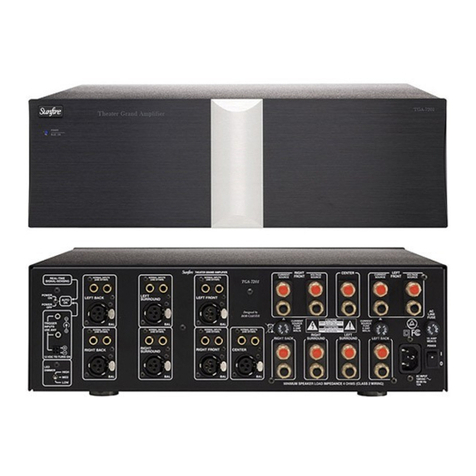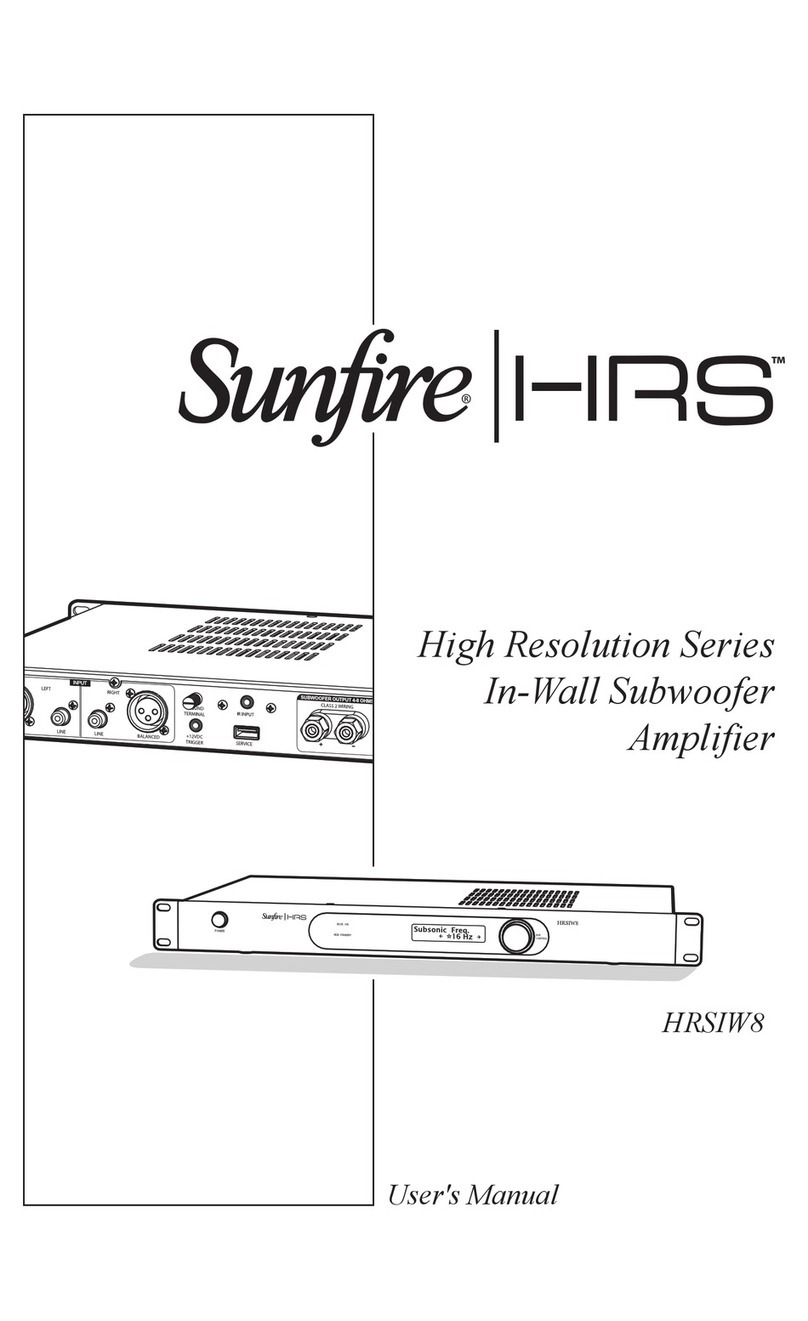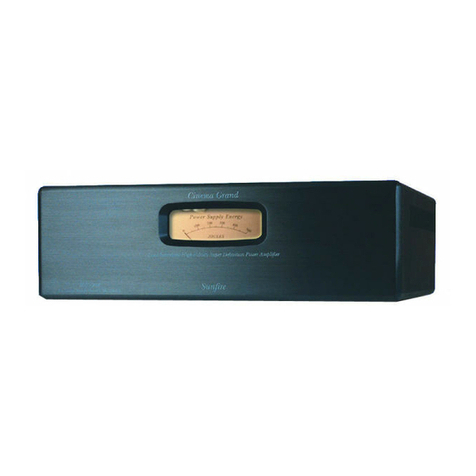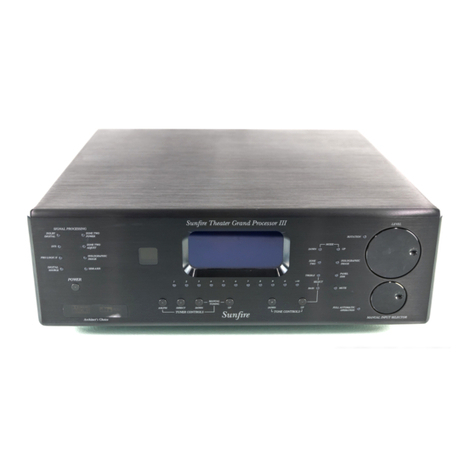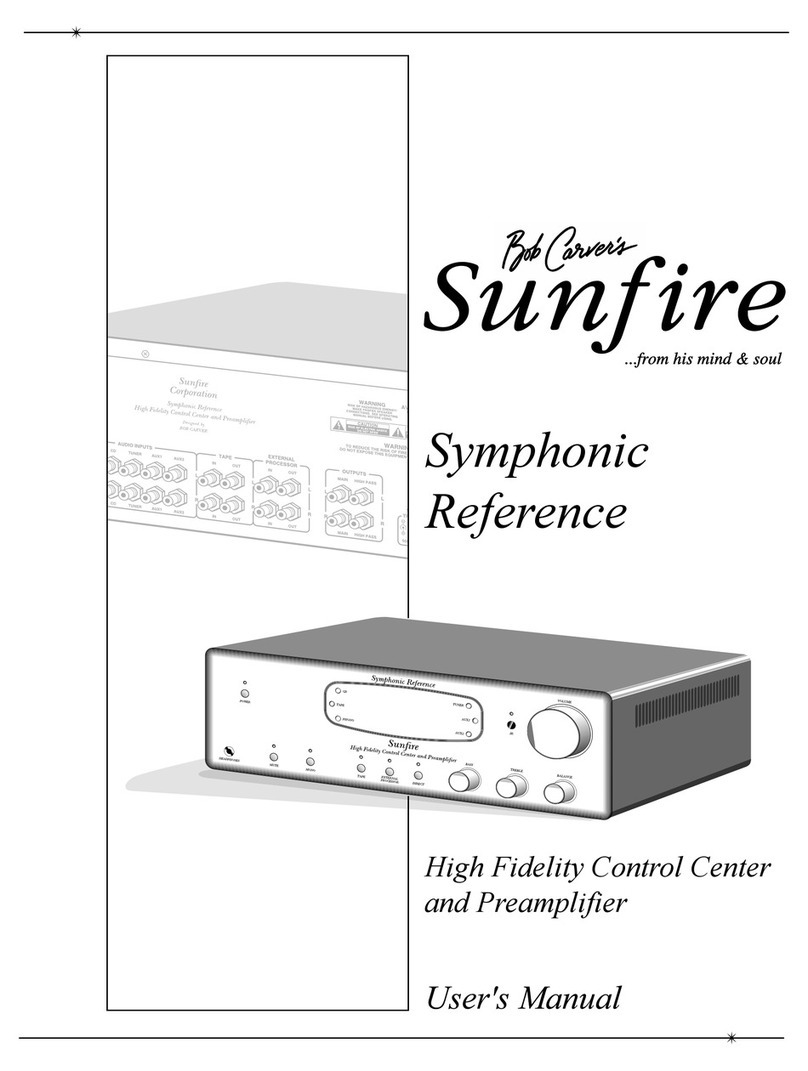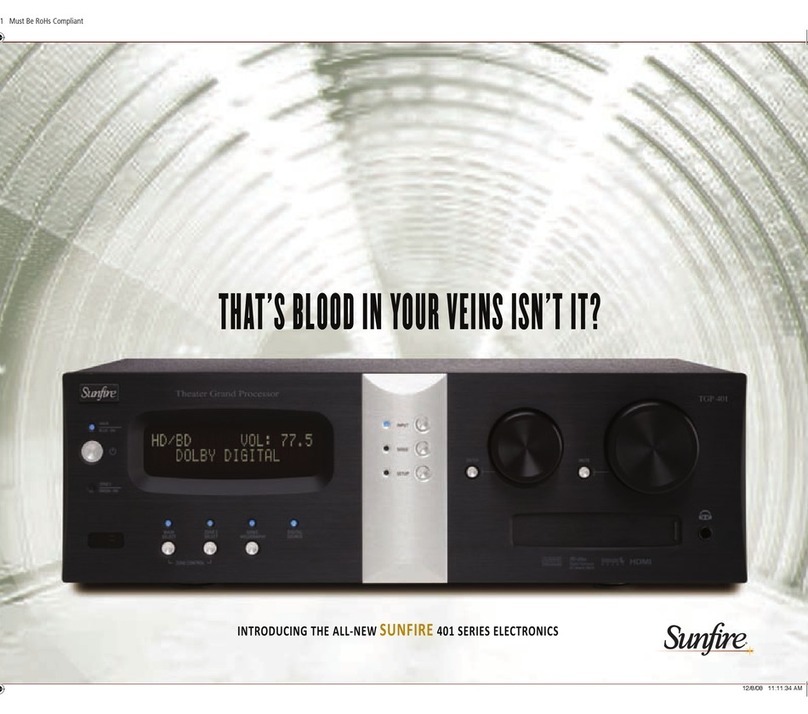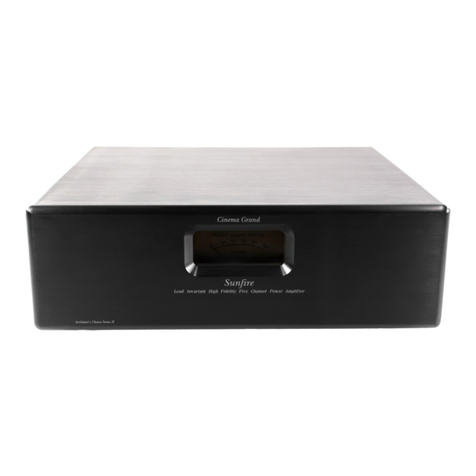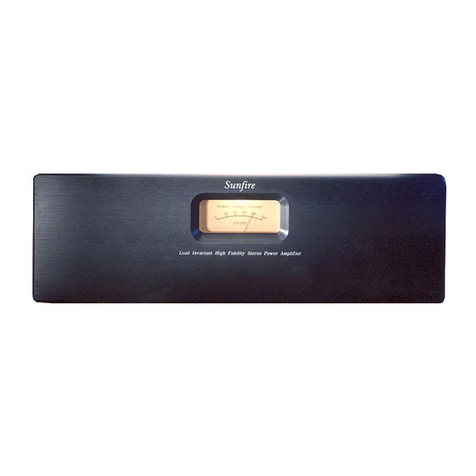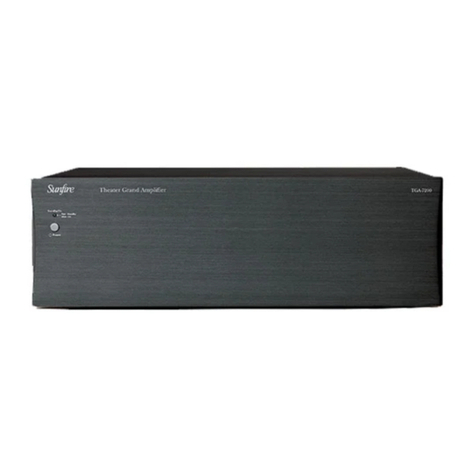
User's Manual
6
Installation
Read and follow all safety instruc-
tions shown on pages 2 and 3.
Observe the following precautions
when choosing a location for your
Cinema Grand AmpliÞer:
• Protect it from prolonged
exposure to direct sunlight and
other direct sources of heat,
such as heating vents and
radiators.
• Do not expose the unit to rain
or moisture. If ßuid or a for-
eign object should enter the
unit, immediately turn off the
power and contact your SunÞre
Dealer.
• Avoid excessive exposure to
extreme cold or dust.
• Do not place heavy objects on
top of the unit.
• Allow adequate ventilation
around the ampliÞer; do not
cover the ventilation slots.
AC Power Considerations
Ensure that the unit is plugged into
an outlet capable of supplying the cor-
rect voltage speciÞed for your model.
The outlet should be capable of sup-
plying 15 amps for the 120 V model,
8 amps for the 230 V model.
Care
If you need to clean the front sur-
face, Þrst turn off the power and then
use a dry soft cloth, rubbing with the
grain. Be careful not to scratch the
display window.
Connection Tips
Before setting up your new system,
please consider the following :
Always make sure that your
components are all turned
OFF before making or
changing connections.
• Make sure that the power
cords of all your components
are attached to the same outlet
or at least to the same circuit.
This will reduce the possibility
of a ground loop in the system.
Make sure that the total cur-
rent draw does not exceed
the current rating of your AC
outlet or power strip.
• Use the XLR inputs if your
preampliÞer has XLR outputs.
These balanced connections
provide superior noise rejec-
tion.
• Whenever possible, keep the
power cords away from the
signal cables or speaker wires
to prevent any hum or audio
interference being heard in the
speakers.
• Choose reliable hookup cables,
also called patch cords or RCA
cables. They should be fully
shielded and as short as pos-
sible for the job.
• Some patch cords can be a
very tight Þt and there is usu-
ally a preferred method of get-
ting them off. Some have to be
removed with a twisting action.
Be gentle or you may damage
the jacks of the ampliÞer or
your other components.
• Some special patch cords
can only be hooked up in one
direction, these are usually
marked with arrows.
• It is usual for the right patch
cord plugs to be red and the
left connections to be white,
grey or black. Video connec-
tions are usually yellow.
Unpacking
Your SunÞre AmpliÞer should reach
you in perfect condition. If you do
notice any shipping damage, please
contact your SunÞre Dealer immedi-
ately.
Gently lift out the unit and remove
all the packing material and acces-
sories. It is important to save all the
packing materials and the box in case
your ampliÞer ever needs to be moved
or shipped for repair.
Make sure that you keep your sales
receipt. It is the only way to establish
the duration of your Limited Warranty
and it may come in useful for insur-
ance purposes.
Please take a moment to Þll out and
mail the SunÞre Customer Response
card. Also read the serial number
located on the rear panel or the under-
side of the chassis,and record it here:
Serial #:
___________________________
Purchased at:
___________________________
___________________________
___________________________
___________________________
Date: _______________________
CHAPTER 1



